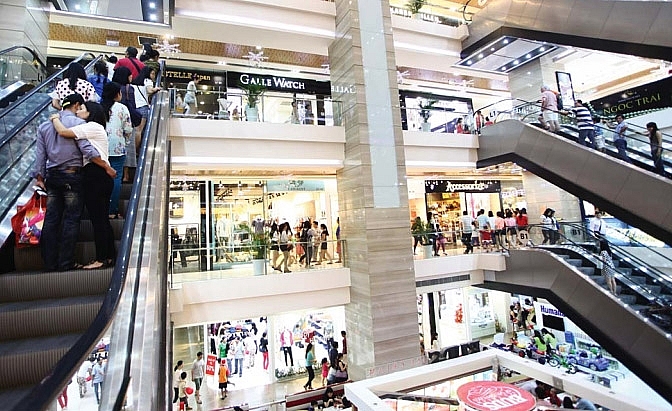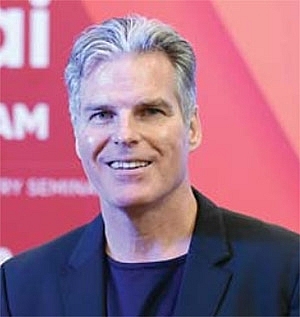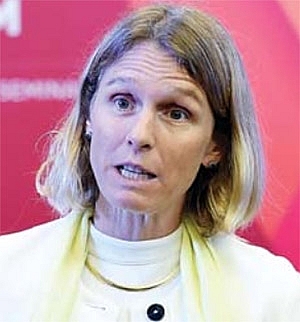Big brands push locals to improve
 |
| As Vietnam grows in stature globally, more international brands will ensure their presence is felt in the country, Photo: Le Toan |
A stable economy, increasing average incomes, higher living standards, and a young population are just some of the factors enabling the fashion retail sector in Vietnam to become ever-more attractive for overseas investors.
In 2016, Zara was the first international brand name knocking on Vietnam’s door, occupying the front of the Vincom Centre on Ho Chi Minh City’s Dong Khoi street. Zara was soon packed with a long queue of local customers who wanted to experience international products right on their doorstep.
A second Zara outlet opened in Vincom Centre Ba Trieu in Hanoi, and it did not take long for a wave of international brand names such as The Body Shop, H&M, GAP, Levi’s, and Mango to create chains in Vietnam.
The latest brand to do so is Japanese global apparel retailer Uniqlo, which plans to open its first store in Vietnam next year by acquiring a 35 per cent stake of Vietnamese fashion company Elise, which has more than 100 outlets nationwide.
While many foreign fashion brands are now present in Vietnam, analysts said that Uniqlo does not want to miss out, especially as Vietnamese consumers often tend to prefer Japanese goods.
French retailer Decathlon meanwhile is waiting for approval from the Ho Chi Minh City People’s Committee to set up a 5,000-square metre supermarket at Rach Chiec National Sport Complex in District 2. The first Decathlon supermarket is only the first of a planned 50 supermarkets across the country.
Tomas Ngo, co-founder and CEO of N Kid Group, the owner of TiniWorld, commented that to develop strongly in Vietnam, the group has to understand customer demand, to innovate and reform all the time, and to meet the newest demands and trends of consumers.
Other international brand names coming to Vietnam include retailers such as Japan’s Takasimaya and AEON.
Fast-growing pace
According to the latest report issued by The Economist Intelligence Unit (EIU), a large number of international investors are showing interest in the Vietnamese retail market.
EIU forecast that overseas companies will continue expanding business activities in the coming years.
The report also forecasts local consumer spending to rise sharply in the next five years, thanks in part to Vietnam’s population of around 94 million people, one-third of whom are aged 35 years or younger.
According to the Vietnam Retailers Association (VRA), more than 200 foreign fashion brands are present in Vietnam, providing a wide range of products from mid- to high-end products, which hold 60 per cent of the market share.
“Foreign brands show big interest in Vietnam because of the industry’s high average growth rate of 20 to 30 per cent per year,” said VRA chairwoman Dinh Thi My Loan.
According to statistics from the Ministry of Industry and Trade, the total revenue generated from retail sales and consumer services in Vietnam in 2018 reached VND 4.4 trillion ($191 million), up 11.7 per cent compared to 2017.
The wholesale and retail sector continues to be a major attractor of foreign direct investment (FDI), with total registered capital in 2018 of $3.37 billion, accounting for 10.3 per cent of the country’s total FDI.
In the 2018-2021 period, it is expected that the retail market will grow steadily with the annually increased demand of leisure (10 per cent), modern grocery (9 per cent), and apparel (6 per cent).
Sales of fashion, personal services, food and beverages, and entertainment such as gyms and cinemas will all rapidly increase over the years to come.
Adaptation of local retailers
Domestic retailers are now being urged to develop strategy and improve their governing capacity, service quality, and know-how to promote their brand name.
According to Loan, location is always of prime importance. More specifically, a spot in a trading centre which can offer good facilities with stable rental is an ideal choice.
“Domestic retailers in Vietnam are quite active and creative in their business but this is not enough. They must gain experience from other international retail chains with updated trends and tendencies,” Loan said.
According to Tran Thu Hien, deputy general director of Vincom Retail JSC, Vincom’s all-in-one system now offers the most complete system for retailers, from entertainment, food and beverages, and leisure to all ages and levels of customers.
Speaking about the company’s 2019 strategy at a seminar held recently in Ho Chi Minh City, Hien said that Vincom planned to set up 13 new malls to help the company create a retail area of 1.6 million square metres across 79 retail centres in 42 provinces and cities. Last year the company opened 20 new retail centres and attracted 180 million customers.
| Chris Dobson - Vice president Retail Design Institute
The traditional way of marketing and promotion of retail is out of date. Retailers must grow themselves towards updated trends if they want to be competitive. One of the most advanced ways is to let customers have their experience with the products before buying, so that then they can really understand the proposed product and make a decision. Other methods include applying digital tech into sale and marketing activities, and displaying a showroom that can offer convenience. However, the future of the retail sector will ultimately depend on the communication and experiences of the customers. Rebecca Pearson - Deputy director, CBRE Asia
Vietnam was one of the fastest-growing nations in the world in 2018. It has also recently become a manufacturing base for Southeast Asia, attracting many large-scale companies like Samsung and Adidas. The confidence index of Vietnamese customers and the urbanisation rate have been also in strong growth, leading to more retail entrants entering the country such as Mothercare, SuperDry, Canali, Bose, Franck Muller, and many others. In addition to that, online and e-commerce retailers are expanding their outlets through different channels such as Habitat and Amazon. In the time to come, customers will shop both using online and offline methods. Retailers will, in turn, have to adapt new technologies to meet the demand of customers. Geoffrey Morrison - Founder and CEO, Concept I
If retailers want to woo customers, they must offer them the opportunity to take products on trial. For example, a Gucci outlet in New York has created 1,000 square metres of space for customers to experience and try their products. This is the new concept of retailing. New retail trends must be more flexible, more innovative, and apply digital and communication technologies. For retailers to be successful in the current modern and competitive market, they should increase communication between the buyers and the sellers, apply new technologies to meet customer demand, and continuously innovate and create new trends for consumers. Dymfke Kuijpers - Senior partner for consumer strategy and retail, McKinsey
Digital and Artificial Intelligence are being used in shopping malls and the lines between traditional retail and e-retail are blurring. This new tech enables stores to tighten links, and new types of partnership between operators and tenants are evolving. For example, Uniqlo can create 600 different styles for customers using only a headphone. This headphone can communicate and analyse customer wants and needs, giving accurate advice. Due to this application, Uniqlo can keep customers faithful, as well as attract potential customers as well. In the same vein, Nike has designed a showroom in which customers play games in order to have more understanding on the products, and Gucci showrooms are more like libraries, in which customers can learn more on the latest fashion trends. |
What the stars mean:
★ Poor ★ ★ Promising ★★★ Good ★★★★ Very good ★★★★★ Exceptional
Related Contents
Latest News
More News
- Dat Bike accelerates sustainable mobility (January 07, 2026 | 15:24)
- Innovation to support modern healthcare development (January 07, 2026 | 10:00)
- Six localities record double-digit growth as regional performance diverges in 2025 (January 06, 2026 | 18:00)
- E-commerce market undergoes transformation amid rising competition and regulation (January 06, 2026 | 17:54)
- Vietnam’s industrial output hits seven-year high in 2025 (January 06, 2026 | 17:47)
- GELEX’s credit rating outlook upgraded to 'Positive' by VIS Rating (January 06, 2026 | 16:49)
- Finance sector lays firm groundwork for 2026 after major reform (January 06, 2026 | 15:30)
- Vietnam’s seafood exports surpass $11 billion in 2025 (January 06, 2026 | 08:51)
- Vietnam GDP posts second-strongest growth since 2011 (January 06, 2026 | 08:35)
- Double-digit GDP growth within reach with shift to higher-value expansion (January 06, 2026 | 08:33)





 Tag:
Tag:




















 Mobile Version
Mobile Version